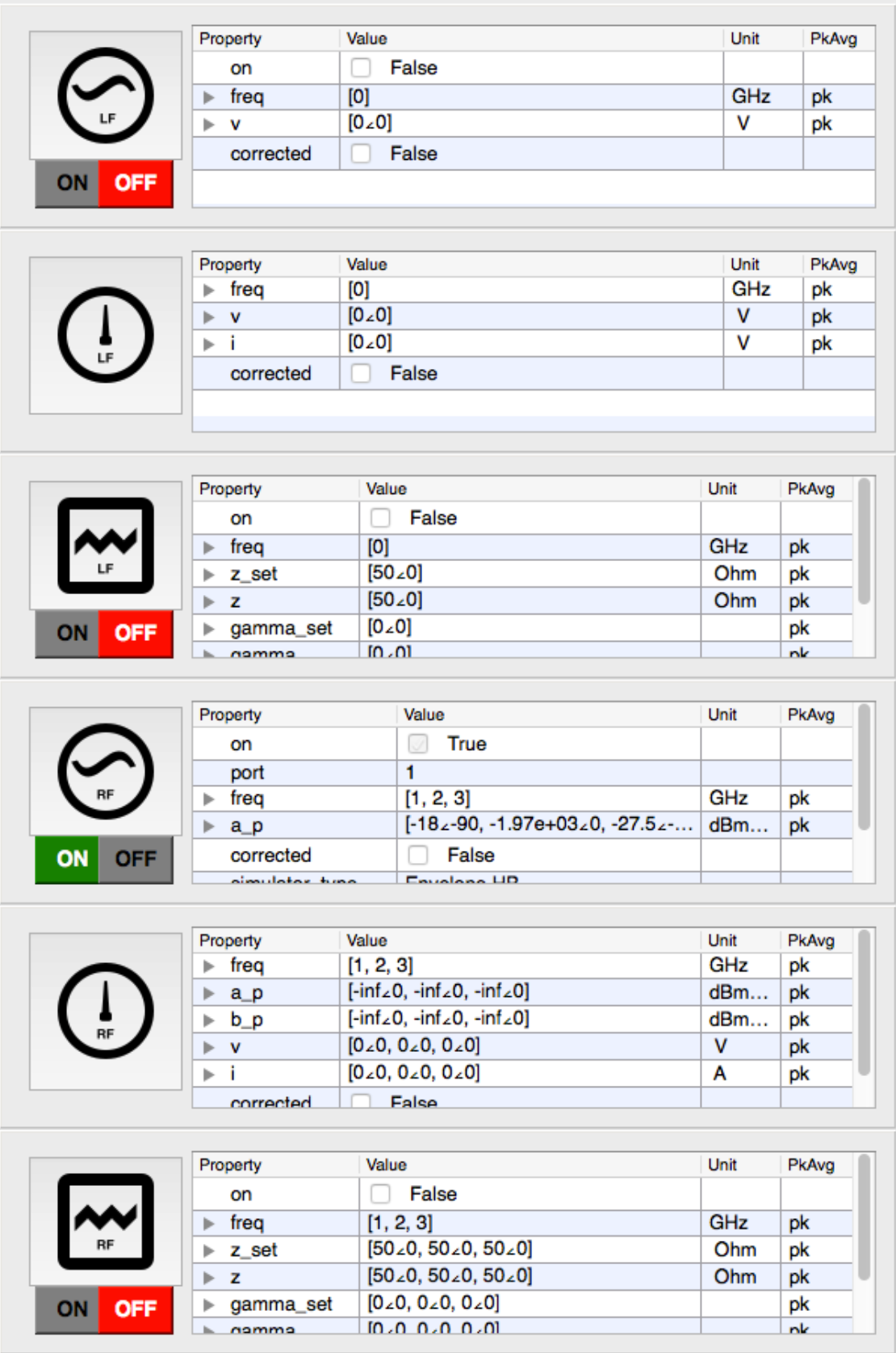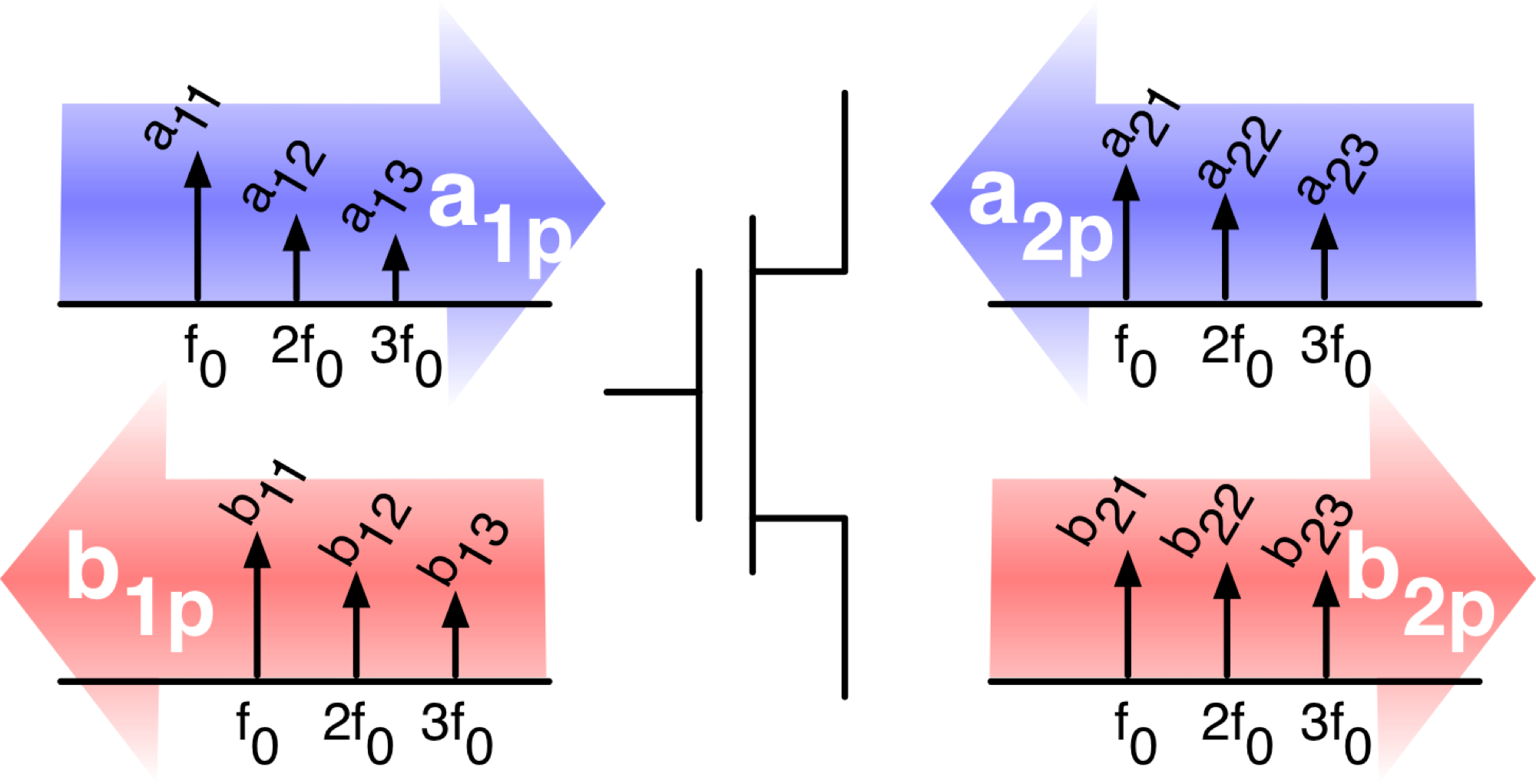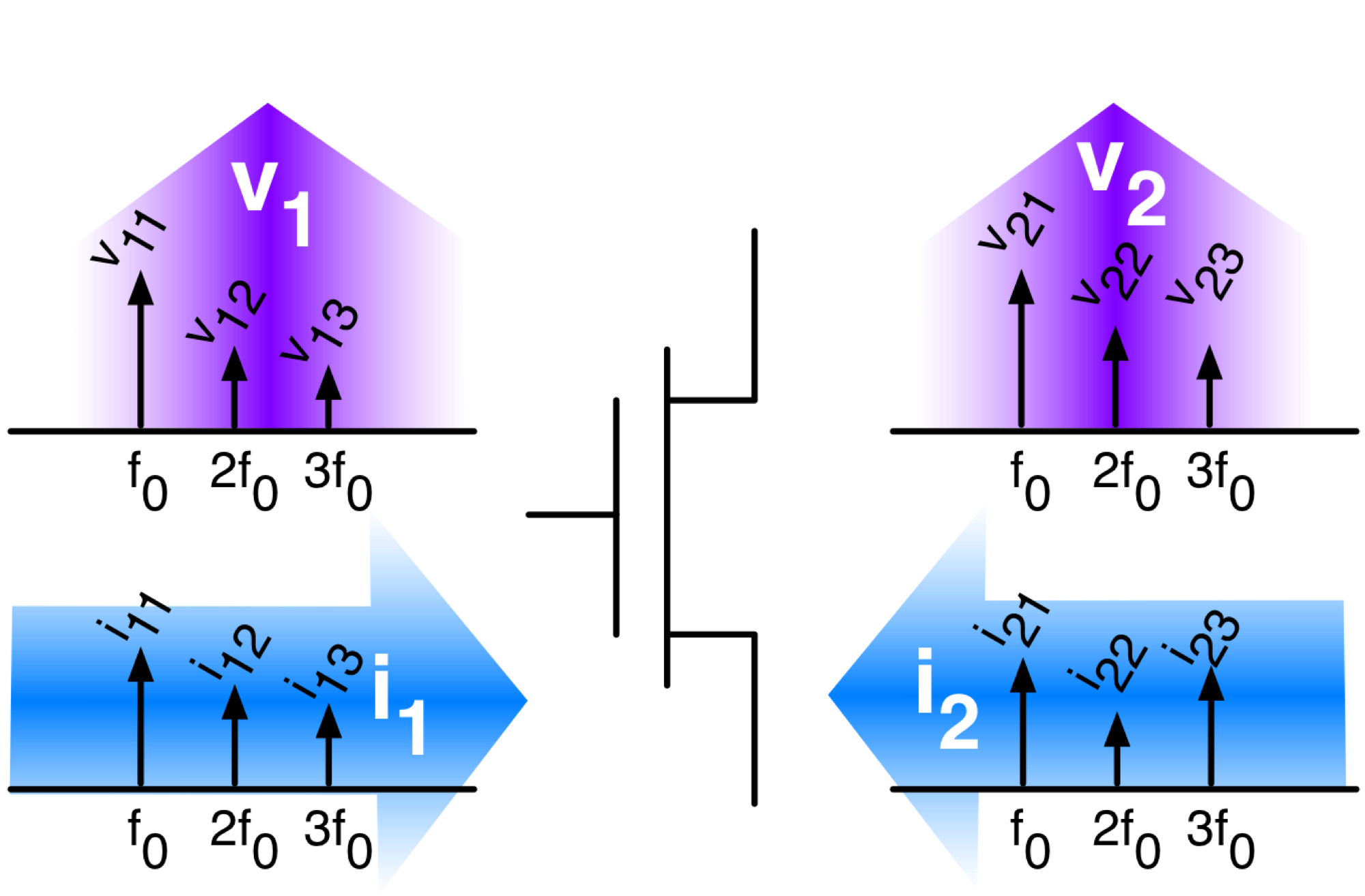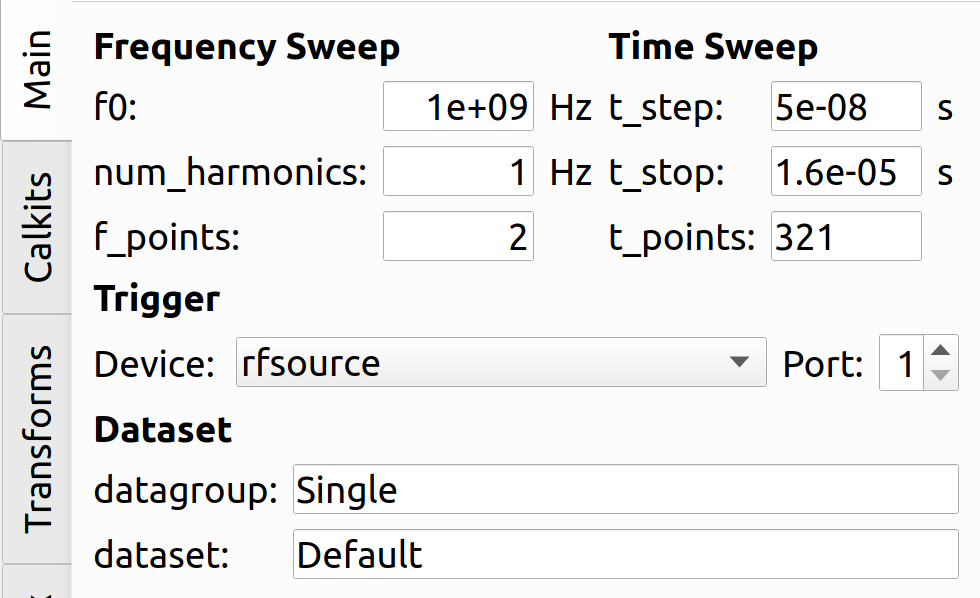Main Menu¶
Assuming all devices are connected, a two-port system is modeled as follows:

A 2-Port System with Unknown DUT.¶
The Main Menu summarizes the test-bench as shown below:

The 2-port System Dashboard Representation¶
The Main Menu consists of two-primary elements:
The Sidebar
The Instrument Manager
Instrument Manager¶
The Instrument Manager consists of:
Settings().num_ports + 1ports
Port 0 is a reserved calibration reference port.
Settings().num_dutsDUTs
- The aux devices consisting of non-compatible instruments:
Power Meter
Spectrum Analyzer
Vector Network Analyzer
Ports¶
The number of ports is configured in sknrf.yml and is available at runtime in Settings().num_ports.
Each measurement port is represented by a column in the Instrument Manager.

A Port PortModel a collection of devices that can be connected to a
measurement port:
port.lfsource, a low-frequency signal source that sets \(v(t, f)\).
port.lfreceiver, a low-frequency signal receiver that gets \(v(t, f)\) and \(i(t, f)\).
port.lfztuner, a low-frequency impedance controller that sets and gets \(z_p(t, f)\)
port.rfsource, a high-frequency signal source that sets \(a_p(t, f)\).
port.rfreceiver, a high-frequency signal receiver that gets \(a_p(t, f)\) and \(b_p(t, f)\).
port.rfztuner, a high-frequency impedance controller that sets and gets \(\gamma_p(t, f)\).
Each measurement port provides a Thevenin Equivalent at Low-Frequency (LF) and High-Frequency (HF). Thus the following equations fully describe the inputs and outputs of a port:
VIZ->BAG

BAG->VIZ

These raw waveforms have the following meaning:
\(v(t, f)\): The input voltage (default \(0.0\)).
\(i(t, f)\): The output current (default \(0.0\)).
\(z(t, f)\): The port termination impedance (default \(z_0 = 50.0\))
\(b_p(t, f)\): The output (reflected) power-wave (default \(0.0\)).
\(a_p(t, f)\): The input (incident) power-wave (default \(0.0\)).
\(\gamma_p(t, f)\): The port reflection coefficient (default \(0.0\)).
Since each of these waveforms has a default value, we need only connect an instrument when we know that the DUT does not meet these assumptions:
Devices with direct access to power and ground do not require a
port.lfztuner.Devices matched to 50 Ohm do not require a
port.rfztuner.Devices matched to 50 Ohm do not require a
port.rfreceiverthat can measure \(a_p(t, f)\).LF circuits do not require
port.rfsource,port.rfreceiver,port.rfztuner.RF circuits do not require
port.lfsource,port.lfreceiver,port.lfztuner.






